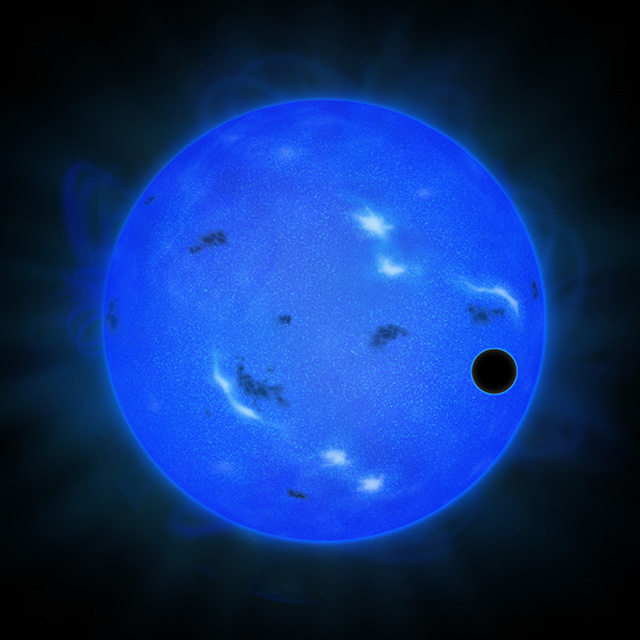Blue Light Observations Indicate Water-Rich Atmosphere of a Super-Earth
| Science
A Japanese research team of astronomers and planetary scientists has used Subaru Telescope’s two optical cameras, Suprime-Cam and the Faint Object Camera and Spectrograph (FOCAS), with a blue transmission filter to observe planetary transits of super-Earth GJ 1214 b (Gilese 1214 b).
The team investigated whether this planet has an atmosphere rich in water or hydrogen. The Subaru observations show that the sky of this planet does not show a strong Rayleigh scattering feature, which a cloudless hydrogen-dominated atmosphere would predict. When combined with the findings of previous observations in other colors, this new observational result implies that GJ 1214 b is likely to have a water-rich atmosphere.

The scientific paper on which this article is based appears in the Astrophysical Journal.
(Narita, N., Fukui, A., Ikoma, M., Hori, Y., et al. 2013 “Multi-color Transit Photometry of GJ 1214b through BJHKs Bands and a Long-term Monitoring of the Stellar Variability of GJ 1214,” Astrophysical Journal, Volume 773, Issue 2, article id. 144.)